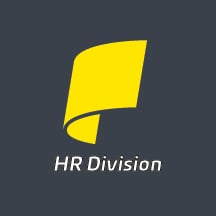Quiet quitting. It’s a movement that’s been trending for the past two years . Gaining widespread attention on social media, quiet quitting is another fallout from the pandemic that’s impacting productivity and the bottom line. Here’s what employers need to know.
What is Quiet Quitting?
 Quiet quitting is when an employee disengages and stops going above and beyond their job responsibilities and only fulfilling the bare minimum to keep their job.
Quiet quitting is when an employee disengages and stops going above and beyond their job responsibilities and only fulfilling the bare minimum to keep their job.
While it’s a movement that’s been trending since 2021, quiet quitting is not all that new. At some point, an employer will experience a quiet quitter dragging down their workplace – the one who has disengaged and is no longer adding value to the business.
So why all the hype now? It has to do with the current labor crisis. Research from McKinsey & Company shows that 40% of workers that are currently employed are already preparing to quit their jobs. On the heels of the Great Resignation, where workers exited the workplace in record numbers to find work-life balance, employers were left scrambling to fill openings. While the employees left behind continue to work patiently through the lagging labor crisis, they are less invested in their jobs. After all, these employees have had to pick up the slack and added job responsibilities – often without additional compensation. Disillusioned and burned out, the quiet quitters have checked out – not doing enough not to get fired and also not enough to get ahead.
According to a recent Gallup study, quiet quitters make up at least 50% of the workforce in the U.S. That’s a hefty number of disengaged workers who are putting in no more effort than required. What’s more, is that the unfulfilled quiet quitters are amplifying their dissatisfaction on social media. And employers are taking note.
➡️➡️Read More: Top HR Trends Small Businesses Should Prepare for in 2023
Reasons Employees have Checked Out
In the past, employers have relied on workers who were eager to take on extra tasks. Then employers expected it. During the pandemic, overworked employees began to see that the costs of those expectations far outweighed the benefits.
 Studies on quiet quitting show the following reasons employees opt to disengage:
Studies on quiet quitting show the following reasons employees opt to disengage:
Job Burnout. According to a McKinsey Research study, nearly 40% of the working population report being burned out. An employee may decide that disengaging is the only way to safeguard their mental health and avoid burnout.
Loss of Connection. With the stress of the pandemic and the shift to working remotely, many workers have lost a connection with their workplace and already feel disengaged.
Loss of Mission and Purpose. With the average person spending an estimated 90,000 hours at work over a lifetime, it’s no surprise that job satisfaction can significantly affect your life. Many workers disengage after realizing that their in jobs that are not aligning with their mission and purpose.
Inflation Stress. Costs are rising and wages are not keeping pace with the rising cost of living, which is impacting overall morale.
The Costs of Quiet Quitting
 While quiet quitting ultimately costs the employee in terms of advancement and compensation, it also costs the employer in a number of ways.
While quiet quitting ultimately costs the employee in terms of advancement and compensation, it also costs the employer in a number of ways.
The cost of disengagement impacts customer service, relationships, and quality, as well as the added costs of recovery as well.
Gallup estimates that the cost of disengaged employees is around 18% of their annual salary. Then there is a cost in lower productivity. Low engagement alone is costing the global economy $7.8 trillion. Further, the consequence of reduced productivity is the added cost of hiring additional workers to fill production gaps.
Solutions: What Employers Can Do
As the labor shortage continues, employers can’t afford to lose workers – even quiet quitters. So, here are a few ways employers can address, and possibly prevent, quiet quitting.
Redefine Job Responsibilities. Recalibrate core job descriptions to reflect work responsibilities more accurately and define what qualifies as extra work.
Prevent Burnout. Employers can help prevent burnout by helping workers set healthy boundaries—especially during a labor shortage, when workers are forced to step in for staff who have left.
Assess How Managers are Currently Engaging. How are managers connecting with their teams? According to the Gallup study, only one in three managers are engaged, which may be a sign that reskilling and more coaching is necessary.
 Establish Expectations. Help employees see how their work contributes to the employer's larger purpose. Create accountability and goals for performance, leadership, and adding value.
Establish Expectations. Help employees see how their work contributes to the employer's larger purpose. Create accountability and goals for performance, leadership, and adding value.
Keep Increases in Workload Temporary. It’s understandable that workloads can shift from time to time. Prevent burnout by keeping workload increases temporary.
Compensate Employees Properly. It goes without saying - compensate workers properly if you want to keep and attract top talent.
Create a Supportive Environment. Create a caring and supportive environment where workers feel confident in speaking up, and leadership will listen and address their concerns.
Recognize, Reinforce and Reward. Employees need to feel valued and rewarded for being a part of their company. Whether offering hybrid work options or access to career development and advancement opportunities, employers should reward workers who demonstrate a commitment to their job.
Seek Outside Expertise and Support. Take proactive measures and work with experts to develop effective retention strategies. This is one area where a Professional Employer Organization (PEO) can help. A PEO can provide support in the areas of recruitment, retention, and employee engagement. In addition, a PEO can help identify underlying issues that may be causing employees to disengage and develop strategies to reduce employee turnover.
About Propel HR. Propel HR is an IRS-certified PEO that has been a leading provider of human resources and payroll solutions for more than 25 years. Propel partners with small to midsized businesses to manage payroll, employee benefits, compliance and risks, and other HR functions in a way that maximizes efficiency and reduces costs. Visit our new website at www.propelhr.com.










